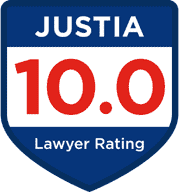The Importance of Keeping Accurate Records in a Bourbonnais Truck Accident Claim
The sheer force of a commercial truck collision is devastating. In the chaotic moments following a crash on Route 50 or near the bustling I-57 interchange in Bourbonnais, your world is turned upside down. The violent screech of tires, the jarring impact, and the unsettling silence that follows create a disorienting and traumatic experience. The immediate priorities are clear: safety, medical attention, and speaking with the Illinois State Police or local authorities. As the initial shock subsides, however, you are left to navigate a complex and intimidating claims process where the details you preserve can define your ability to recover.
The aftermath of a serious semi-truck accident involves more than just physical and emotional recovery; it requires a methodical approach to documenting every detail of the incident and its far-reaching consequences.
Why is a Truck Accident Claim So Different from a Car Accident Case?
A collision involving two passenger cars is typically a dispute between two drivers and their respective insurance carriers. A commercial truck accident is a substantially more complex legal matter. The potential for multiple at-fault parties means the investigation is broader, the evidence required is more extensive, and the stakes are significantly higher.
Liable parties in a Bourbonnais truck accident case may include:
- The Truck Driver: The individual operator may have been distracted, texting, fatigued, impaired by alcohol or drugs, or violating fundamental traffic laws at the time of the crash.
- The Trucking Company (Motor Carrier): The company could be held directly liable for its own negligence, such as negligent hiring practices, providing poor driver training, failing to conduct required background checks, or fostering a culture that encourages drivers to violate federal safety regulations to meet deadlines. They can also be held vicariously liable for the actions of their employee driver.
- The Owner of the Tractor or Trailer: In the modern trucking industry, it is common for the tractor and the trailer to be owned by different entities. This can add another layer of potential liability and a separate insurance policy to the claim.
- The Cargo Loader or Shipper: Federal regulations dictate how cargo must be loaded and secured. If improperly loaded or secured cargo shifts during transit, it can alter the truck’s center of gravity and cause a catastrophic loss of control. The company responsible for loading may be at fault in this scenario.
- The Truck or Parts Manufacturer: A mechanical failure could be the root cause of the accident. If a defective tire, a faulty brake system, a flawed steering component, or another defective part is to blame, a product liability claim may be brought against the manufacturer.
Because of these complexities, trucking companies and their insurers deploy rapid-response teams of investigators and attorneys to the scene, sometimes within hours of the crash. Their primary goal is to control the narrative, gather evidence that favors their position, and find ways to minimize their financial liability. Your own detailed records are your most powerful tool to counter their efforts and establish the truth.
What Information Should You Collect at the Accident Scene?
While your health and safety are the absolute top priorities, if you are physically able to do so, collecting key information at the scene is invaluable. Evidence can be lost, altered, or forgotten with each passing hour. The information you gather in the immediate aftermath can be difficult or impossible to obtain later.
Focus on documenting the following:
- Police and First Responder Details: Politely ask for the names and badge numbers of the responding officers from the Bourbonnais Police Department, Kankakee County Sheriff’s Office, or Illinois State Police. Make a note of the police report number, as this document will contain the officer’s initial findings and diagrams of the scene.
- Driver and Trucking Company Information: Use your phone to take clear photos of the truck driver’s license, their commercial driver’s license (CDL), and all insurance information. Critically, you must also photograph the truck itself. Capture images of the name of the motor carrier on the cab doors, the USDOT number, and the license plates for both the tractor and the trailer. This information is essential for identifying all potential defendants.
- Witness Contact Information: If other drivers, pedestrians, or passengers stopped to help or saw what happened, ask for their name and phone number. An independent witness who can corroborate your account of the events is an incredibly persuasive asset in any claim.
- Photographic and Video Evidence: Your smartphone is a powerful evidence-gathering tool. Take extensive photos and videos of the entire scene from multiple angles and distances. Capture the final resting positions of all vehicles, the specific damage to your car, the damage to the truck, visible skid marks on the pavement, the condition of the road, the weather conditions, and any relevant traffic signs or signals. This visual evidence preserves a state of affairs that will be gone forever once the scene is cleared.
- Record Your Recollection: As soon as you can, write down or make a voice recording of everything you remember about the accident. Details fade quickly. Note where you were going, what you saw the truck do, the sequence of events, and anything the truck driver said to you after the crash. Do not admit any fault or apologize.
How Do Medical Records Form the Foundation of Your Injury Claim?
Your health is the most important consideration. Seeking immediate medical evaluation at a local hospital, such as Riverside Medical Center or AMITA Health St. Mary’s Hospital in Kankakee, is vital not only for your well-being but also for your legal claim. Adrenaline from the trauma of a crash can easily mask the symptoms of serious injuries like internal bleeding, concussions, or soft tissue damage. A delay in seeking treatment will almost certainly be used by an insurance company to argue that your injuries were not caused by the accident or are not as severe as you claim.
A complete and continuous medical file is non-negotiable for proving your injuries. This file should include:
- All Emergency Response Records: This includes reports from the responding emergency medical technicians (EMTs) and the ambulance service that transported you.
- Hospital Records: Obtain all documentation from the emergency room, including admission records, doctors’ notes, nurses’ notes, and the results of all diagnostic tests like X-rays, CT scans, and MRIs.
- Follow-Up Care: Keep detailed records from your primary care physician and any specialists you are referred to, such as orthopedists, neurologists, pain management doctors, or surgeons.
- Therapeutic Care: Maintain a complete log of all physical therapy, occupational therapy, and any other rehabilitative care you receive. This demonstrates your commitment to recovery.
- Prescriptions and Medical Equipment: Keep all receipts for prescribed medications and any necessary medical equipment, such as crutches, braces, or walkers.
- Comprehensive Bills: Collect and organize every single bill and invoice for every medical service you receive.
These records create an official, unimpeachable timeline. They connect your injuries directly to the negligence that caused the crash, document the severity and progression of those injuries, and prove the tangible financial cost of your physical recovery.
Can a Personal Journal Help Prove Non-Economic Damages?
While medical bills and repair invoices document your financial losses (known as economic damages), they fail to show the full story of your suffering. Non-economic damages—compensation for physical pain, emotional distress, mental anguish, and loss of enjoyment of life—are often the most significant component of a personal injury award. A personal journal is a powerful and effective tool for documenting this profound human impact.
On a daily or weekly basis, make simple notes about:
- Your Physical Pain: Describe the location, type, and intensity of your pain on a scale of 1 to 10. Note what activities make it worse or better.
- Your Emotional State: Be honest about your feelings. Note your struggles with anxiety when you hear a large truck, your fear of getting back in a car, or feelings of depression, frustration, and helplessness. Do you have trouble sleeping or experience recurring nightmares about the accident?
- Daily Limitations and Frustrations: Write down specific, concrete examples of activities you can no longer do or that are now exceedingly difficult. This could be as simple as being unable to lift a grocery bag, play with your children, perform household chores, or participate in hobbies and social activities that once brought you joy.
- Impact on Relationships: Explain how your injuries and emotional state have affected your interactions with your spouse, family, and friends. This can be vital for a spouse’s potential claim for loss of consortium.
This personal account provides a compelling narrative that goes beyond cold medical charts. It humanizes your experience for an insurance adjuster, judge, or jury, demonstrating the true, day-to-day cost of the accident on your quality of life.
What Financial Records are Needed to Prove All Economic Losses?
A serious injury almost always results in significant time away from work, leading to a cascade of financial stress. To recover fair compensation for lost income and any impact on your future earning ability, you must provide clear and convincing documentation.
Gather these essential financial records:
- Recent Pay Stubs or Earnings Statements: These documents show your rate of pay and average hours worked in the months leading up to the accident.
- An Employment Letter: A formal letter from your employer’s HR department can confirm your job title, salary or wage, and the specific dates you were unable to work due to your injuries.
- Tax Returns: Your W-2s and tax returns from the past several years can help establish a clear history of your earnings.
- Self-Employment Records: If you are a business owner or independent contractor, you will need to provide documents like profit and loss statements, 1099 forms, invoices, and bank statements to prove your lost income.
- Documentation of Lost Opportunities: Keep records of any missed promotions, lost contracts, or forfeited bonuses that were a direct result of your inability to work.
If your injuries are permanent and prevent you from returning to your previous career, these foundational documents become the basis for a vocational expert and an economist to project and calculate your total loss of future earning capacity, which can be a substantial part of your claim.
How Can an Attorney Uncover Evidence from the Trucking Company?
Much of the most important and incriminating evidence in a truck accident case is held exclusively by the trucking company and its agents. A trucking company will not voluntarily hand over information that proves its own negligence. This is where experienced legal assistance becomes absolutely essential. An attorney can use powerful legal tools like a spoliation of evidence letter (a formal demand that the company preserve all relevant evidence) and subpoenas to obtain these critical records.
This crucial evidence may include:
- The Driver’s Qualification File: The FMCSA requires companies to maintain a detailed file on every driver containing their employment history, driving record, training certifications, medical certificate, and pre-employment and random drug test results.
- Hours of Service (HOS) Logs: For decades, these were paper logbooks, but now they are typically recorded by an Electronic Logging Device (ELD). These logs show precisely how long the driver was on the road and can be powerful evidence of dangerous driver fatigue.
- Data from the ECM/EDR: The truck’s Electronic Control Module or Event Data Recorder, often called the “black box,” records critical data on the truck’s operational status in the seconds before and during a crash, including speed, braking, RPMs, and steering inputs. This data must be downloaded and preserved immediately.
- Inspection and Maintenance Records: These files can reveal a pattern of neglected maintenance, faulty repairs, or a failure to address known mechanical issues, which can establish the company’s direct negligence.
- Post-Crash Drug and Alcohol Test Results: Federal regulations mandate that trucking companies conduct drug and alcohol testing on a driver after any accident involving serious injury or a fatality.
How Will the Insurance Company Scrutinize Your Records?
Insurance adjusters are skilled negotiators trained to protect their company’s bottom line by finding any reason to devalue or deny your claim. They will analyze your carefully kept records with a fine-toothed comb, looking for any perceived weakness, inconsistency, or gap they can exploit.
Common tactics include:
- Pointing to Gaps in Treatment: If you wait weeks to see a doctor or if you miss physical therapy appointments, they will argue that your injuries must not be as severe as you claim.
- Blaming Pre-Existing Conditions: The adjuster will request your entire medical history, hoping to find a previous injury or degenerative condition they can blame for your current pain.
- Making a Quick, Lowball Offer: It is a common strategy for insurers to present a small, immediate settlement offer before the full extent of your injuries and long-term medical needs are known. They hope you will accept it out of financial desperation, thereby forfeiting your right to seek further compensation.
- Using Your Own Words Against You: Adjusters will look for any inconsistencies between what you told a doctor, what you wrote in your journal, and what you say in a recorded statement. This is why you should never give a recorded statement without legal counsel.
- Monitoring Your Social Media: In today’s world, insurers actively scrutinize claimants’ public social media profiles. If your records document debilitating pain but your Facebook page shows a photo of you smiling at a family event, they will use that photo to argue you are exaggerating your suffering.
Meticulous, consistent, and accurate records are your best defense against these cynical and predictable strategies.
Contact a Bourbonnais Truck Accident Attorney Today
The aftermath of a semi-truck accident is overwhelming. Trying to heal from serious injuries while managing a mountain of paperwork, fielding calls from adjusters, and fighting with a well-funded corporate insurance company is a burden no one should have to bear alone. Holding a negligent driver and a powerful trucking company accountable requires a swift and thorough investigation and the skillful presentation of meticulously organized evidence. Your role in preserving records from the very beginning can make all the difference in achieving a just outcome.
If you or a loved one has been injured in a commercial truck accident in Bourbonnais or anywhere in Kankakee County, do not hesitate to seek knowledgeable legal guidance. Contact the Fotopoulos Law Office today at 708-942-8400 for a free and confidential consultation. We can help you protect your rights, manage the complex evidence-gathering process, and pursue the full and fair compensation you are owed.










Leave a Reply
Want to join the discussion?Feel free to contribute!